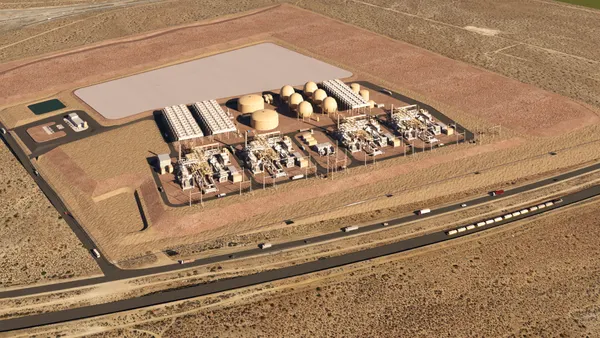Innovations in string inverter technology and software controls are giving rise to AC block energy storage systems. While DC blocks will continue to have their place in the energy storage market, AC blocks provide distinct advantages such as granular control, higher availability and shorter project development timelines. With both solutions now available at grid scale, it is important to understand their differences and the value they both provide.
What is an AC and DC Block?
Energy storage systems require the ability to convert electric current because the electric grid operates on Alternating Current (AC), while batteries store energy in Direct Current (DC). There are two primary configurations for integrating energy storage with the grid. The first is the AC block configuration, where string inverters are internalised in each energy storage enclosure. These inverters convert DC power from the batteries to AC, allowing the energy storage enclosure to directly interface with the grid. The second is the DC block configuration, where batteries are housed in dedicated enclosures, which are then connected to central inverters to convert DC power to AC. Until recently, bi-directional string inverters did not have the required power level necessary for widespread adoption of AC blocks. With this technology now available, AC and DC block configurations are both competitive options for energy storage sites. Each offer distinct advantages that can be leveraged depending on the requirements and scope of your project.
AC block advantages
AC blocks have several advantages for energy storage project developers. First, the use of string inverters allows for decentralised and more granular control. This level of control can be leveraged using software to maximize energy throughput. AC blocks also provide higher availability, which is defined as the percentage of time an energy storage system is online and operating at its designed capacity. If a DC block’s central inverter fails, a larger section of the energy storage system needs to be shut down to replace it. With an AC block, it is relatively simple to swap out malfunctioning components if one string inverter fails, which has the potential to significantly reduce downtime.
The development timeline for energy storage projects built with AC blocks can also be shorter, with fewer total shipments of equipment required to get the project built and running. AC blocks connect directly to medium voltage transformers, simplifying the interconnection process as well.
DC block advantages
DC blocks have many advantages, including allowing developers flexibility to select a central inverter that fits the specific needs of a project site. DC blocks also offer the option of DC-coupling, allowing efficient connection of energy storage systems to solar resources.
DC blocks are traditionally preferred at sites where augmentation is required and adding AC inverter capacity is restricted. Augmentation is the process of adding additional capacity to energy storage projects to account for battery degradation, which is caused by several factors such as frequency of use and external temperatures. Many countries including the United States, Australia and England require interconnection agreements, which specify the amount of power a site is permitted to connect to the grid. Agreement approvals frequently sit in very long interconnection queues; for example, the typical duration from connection request to commercial operation in the U.S. was 5 years for projects built in 2023.
When augmenting an energy storage system, inverter capacity should align with the amount of power of the facility and adding more inverters – which is required to augment with AC blocks – may require a project site to update its interconnection agreement. Therefore, one of the simplest ways to augment a project is known as “DC shuffling”, which can be done with DC blocks. This involves moving battery enclosures around to free up an inverter, behind which new battery units are installed. The number of inverters does not change, nor does the nominal power of the plant.
Selecting the optimal solution based on project scope
The evolving technology of energy storage solutions showcases the industry’s maturation. Developers need to weigh the cost, time and capabilities of both AC and DC systems to choose the best solution for their projects. By partnering with a high-quality integrator, both AC and DC blocks are safe and effective options for building energy storage facilities.










